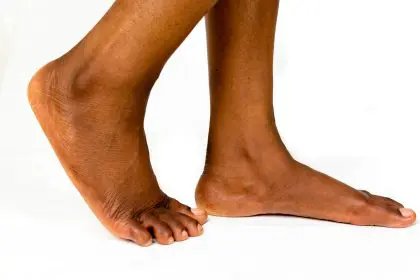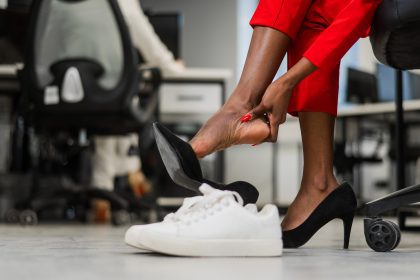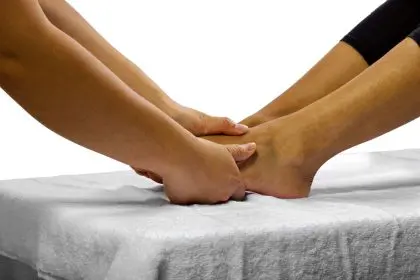Toenail fungus might start as a mere cosmetic concern, but this persistent infection can develop into a painful, embarrassing condition when left untreated. Known medically as onychomycosis, fungal nail infections affect millions of people worldwide, causing unsightly symptoms that many sufferers desperately want to eliminate.
The telltale signs your toenails are infected
Recognizing toenail fungus early allows for more effective treatment. The most common symptoms include visibly thickened nails that appear yellow or white rather than clear or pink. As the infection progresses, nails may become increasingly brittle and prone to crumbling or breaking. Some people also notice an unpleasant odor coming from the affected nails.
The infection typically begins at the edge of the nail and slowly spreads toward the cuticle. You might initially notice a small white or yellow spot that gradually expands to cover more of the nail surface. Unlike typical nail discoloration from polish or trauma, fungal infections cause structural changes to the nail itself.
Left untreated, the fungus can spread to other toenails or even fingernails through direct contact. In severe cases, the infection can cause significant pain and difficulty walking, particularly when wearing closed-toe shoes.
Why treating toenail fungus requires patience
One of the most important aspects of treating toenail fungus is understanding the timeline for improvement. Unlike many skin conditions that respond quickly to treatment, nail fungus requires persistent, long-term application of remedies.
The slow growth rate of toenails presents a significant challenge. Toenails grow at approximately 1mm per month, meaning a complete replacement of the nail takes 12-18 months. This explains why visible results often take several months to appear, with complete treatment potentially requiring up to a year of consistent application.
During the first four to five months of treatment, you may notice subtle improvements such as smoother, clearer growth at the base of the nail. The new growth should appear less thick or discolored than the affected portion. You might also observe less crumbling and brittleness as the damaged nail gradually grows out.
Medical professionals recommend continuing treatment until the infected nail has completely grown out and been replaced by healthy nail tissue. Stopping treatment prematurely often results in recurrence of the infection.
Key ingredients that actually fight fungal infections
When selecting a toenail fungus treatment, understanding the active ingredients is crucial. Many products on the market focus primarily on improving nail appearance rather than addressing the underlying infection. Here are the most effective ingredients backed by clinical research:
Tolnaftate works by interfering with fungal cell membrane formation, effectively stopping the growth and reproduction of the fungus. This FDA-approved antifungal ingredient appears in several over-the-counter products and provides broad-spectrum activity against various fungal species.
Clotrimazole represents another powerful antifungal that stops fungal growth by disrupting the production of ergosterol, an essential component of fungal cell membranes. This broad-spectrum agent effectively treats many types of fungal infections and comes in various formulations including creams, solutions, and sprays.
Undecylenic acid, derived from castor oil, provides antifungal properties by inhibiting the growth of the fungus. While less potent than some synthetic antifungals, this naturally derived ingredient causes fewer side effects and works well for mild to moderate infections.
Several complementary ingredients help improve nail appearance and enhance penetration of antifungal agents:
Urea softens and thins the nail plate, allowing antifungal ingredients to penetrate more effectively to the infection site beneath the nail. Higher concentrations (40%) can significantly improve nail texture and facilitate better treatment outcomes.
Salicylic acid breaks down the outer layers of thickened, damaged nails. This keratolytic agent helps remove infected nail material and improves the appearance of affected nails while allowing better penetration of antifungal ingredients.
Lactic acid functions as a gentle exfoliant that hydrates and smooths the nail surface. While not directly antifungal, it helps maintain nail health during treatment and can improve overall appearance.
Top-rated treatments worth trying
After extensive research and consultation with dermatologists, several standout products have emerged as effective options for treating toenail fungus:
Fungi-Nail represents one of the most comprehensive solutions available without a prescription. Its active ingredient, tolnaftate 1%, effectively penetrates the nail and surrounding skin to combat fungal growth. The formula also includes soothing ingredients like aloe vera and tea tree oil to prevent irritation during treatment. Available in ointment, pen, and liquid forms, this product offers application flexibility for different preferences and needs.
Kerasal focuses on improving the appearance of thick, damaged nails through its unique combination of ingredients. While not primarily an antifungal treatment, its formula containing urea and salicylic acid effectively breaks down thickened nails, making it an excellent complementary treatment to use alongside true antifungals. Many users report visible improvements in nail appearance within weeks of beginning application.
Globe Clotrimazole Antifungal Cream works particularly well for treating skin infections around the nails. The active ingredient, clotrimazole 1%, effectively addresses various fungal conditions, including athlete’s foot that often accompanies toenail fungus. Its thick, soothing texture provides easy application and helps prevent spreading of the infection to surrounding skin or other nails.
For those seeking natural alternatives, tea tree oil offers mild antifungal properties. While less potent than pharmaceutical options, some studies show effectiveness against certain fungal strains. This option works best for mild cases or as a preventative measure rather than for treating established infections.
Application tips for maximum effectiveness
Proper application significantly impacts treatment success. Follow these expert recommendations to maximize effectiveness:
Prepare the nail properly before each application by cleaning and drying the affected area thoroughly. Consider soaking feet in warm water for 10-15 minutes to soften nails, allowing better penetration of treatment products.
File thickened nails gently to reduce thickness before applying medication. This improves product penetration to the infection site beneath the nail. Use a dedicated file for infected nails to prevent spreading the fungus.
Apply products consistently according to package directions, typically once or twice daily. Set a regular schedule to ensure you don’t miss applications, as consistency proves crucial for successful treatment.
Extend application to the surrounding skin, as fungal infections often affect the nail bed and surrounding tissue. Treating only the visible nail may leave reservoir areas untreated, leading to reinfection.
Continue treatment for the recommended duration, even if visual improvement occurs earlier. Premature discontinuation represents one of the most common reasons for treatment failure and recurrence.
When to seek professional medical help
While over-the-counter treatments work effectively for many people, certain situations warrant professional medical attention:
Seek medical help if you notice no improvement after three months of consistent treatment with over-the-counter products. This may indicate a particularly resistant infection or potentially a misdiagnosis, as other conditions can mimic the appearance of fungal infections.
People with diabetes or compromised immune systems should consult healthcare providers before self-treating. These conditions increase the risk of complications from fungal infections and may require prescription-strength medications or special care approaches.
Consider professional evaluation if the infection causes significant pain or affects multiple nails. Widespread infections often respond better to oral antifungal medications that require a prescription.
Healthcare providers may recommend prescription-strength topical treatments, oral antifungal medications, or in some cases, laser therapy. These professional treatments often provide faster and more complete resolution, particularly for severe or resistant infections.
Preventing recurrence through simple habits
After successfully treating toenail fungus, preventing recurrence becomes the next priority. Implement these preventative measures to maintain healthy nails:
Protect your feet in public spaces by wearing waterproof sandals or shower shoes in communal areas like locker rooms, public showers, and swimming pools. These environments typically harbor fungi and provide ideal warm, moist conditions for transmission.
Practice proper foot hygiene by washing feet daily with soap and water, drying thoroughly between toes, and changing socks regularly. Moisture creates an environment conducive to fungal growth, so keeping feet dry significantly reduces infection risk.
Choose breathable footwear made from materials that allow air circulation. Avoid wearing the same shoes daily, allowing at least 24 hours between wearings for shoes to dry completely. Consider using antifungal shoe sprays or powders for additional protection.
Maintain proper nail care by keeping toenails trimmed straight across and not too short. Avoid sharing nail tools with others, and consider bringing your own sterilized instruments to nail salons to prevent cross-contamination.
Address athlete’s foot promptly, as this common fungal skin infection often spreads to toenails. Treating fungal skin infections quickly helps prevent nail involvement and subsequent difficult-to-treat nail infections.
By combining effective treatment with preventative measures, you can overcome toenail fungus and maintain healthier, clearer nails. Remember that persistence and consistency with treatment protocols provide the best chance for successful elimination of this stubborn condition.














